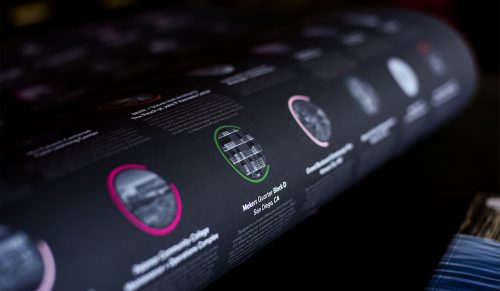
A Specification to Meet Every Need
More than ever before, project documentation procedures face increased constraints by timelines, clients, delivery methods, project types, and municipalities. As part of BNIM’s Redesigning Design efforts, we are synthesizing our specification process from a one-size-fits-all approach to an approach that employs various, distinct specification tactics and related templates. This is BNIM’s plan to support an efficient construction process for everyone involved.
BNIM’s original specification approach was based on the industry’s full length specification – using a single specification template and customizing to reflect the project requirements. But over the years, as project types have multiplied and approaches have morphed, it has become apparent that the traditional approach and BNIM’s single master specification template is more tedious than practical. After surveying our projects and teams, we determined a need to broaden our specification approaches and have implemented the following solutions:
![]()
No Specifications
The No Specifications approach is ideal for small projects with one or two-person teams. BNIM utilizes a general notes template, along with drawings with detailed notes, to convey the necessary information regarding the plan to the contractor.
Outline Specifications
Outline Specifications are condensed, product heavy specifications. BNIM’s Outline Specifications masters are based on off-the-shelf outline specification templates, but have been fortified with curated product selections taken from BNIM’s Full Length masters. This approach is frequently used in multi-family housing and design-build projects. Typically, the fee and schedule in these projects restrict the amount of time budgeted for writing the specification. In these projects, the specification serves as a guide for materials and systems, but the actual selection is market driven.
Outline Specifications can also be used as part of schematic narratives written at the conclusion of schematic design. As part of schematic narratives, Outline Specifications are written to convey the proposed materiality of the project prior to a comprehensive vetting of materials and systems in design development.
Abbreviate Full-Length Specifications
The name of these specifications refers to the amount of time required to assemble them, rather than the actual specification length. This approach acknowledges that many projects do not allow or require repeated specification iterations due to straight-forward programs and construction types, or compressed time frames and limited budgets. The Abbreviated Full-Length Specification based on BNIM’s traditional Full Length master is more conceptual in nature than the traditional approach and written with fewer edits to the template. This limited customization simplifies the specification writing process as a whole.
Full-Length Specifications
The traditional Full-Length Specification is the most detailed and customized. Multiple mockups, specialized enclosure systems, high-end finishes, and sustainability requirements are all parts of the equation. Longer time frames and larger budgets allow for multiple iterations as the specification is developed and the drawings are refined.
In recent years, off-the-shelf specification template providers have begun breaking out materials and systems into individual specification templates in an effort to fine-tune the off-the-shelf templates. Unfortunately, this movement complicates the coordination of drawings and specifications, as team members struggle with the constantly increasing number of options. BNIM has begun to reverse this trend by recombining related sections.
Similarly, many of BNIM’s projects have owner or contractor-provided front ends. In the past, these front ends required a detailed coordination with BNIM’s Division 01 sections to prevent conflicting requirements. Teams that are faced with provided front ends are overwhelmed by the coordination process and tend to eliminate BNIM’s Division 01. Unfortunately, by doing so, these projects lacked the critical language to assist in guiding a project through construction administration. In response, a single section Division 01 is now being used to provide key requirements and simplify the Division 01 coordination process.
By taking a step back and questioning the status quo, BNIM no longer has to adapt the one-size-fits-all template. We are now able to efficiently provide a specification of appropriate level of detail for each project no matter its size, budget, or scope of work. We are able to resourcefully do away with specifications for our No Specifications solution for our smaller projects and focus our energy on Full-Length specifications with our more comprehensive projects. Abbreviate Full-Length Specifications and Outline Specifications allow us to stick to a familiar routine while communicating only what the contractor requires to get the project built. Multiple specification delivery options allow our teams to streamline their specification process and thus to devote more time to the project’s design.

